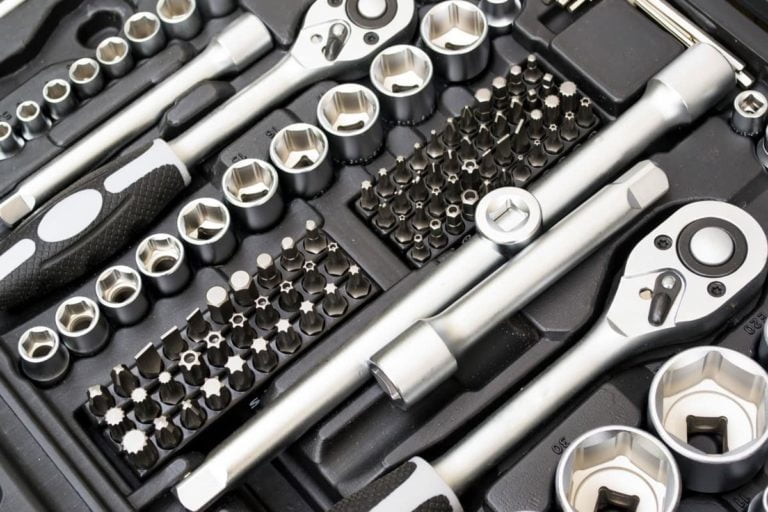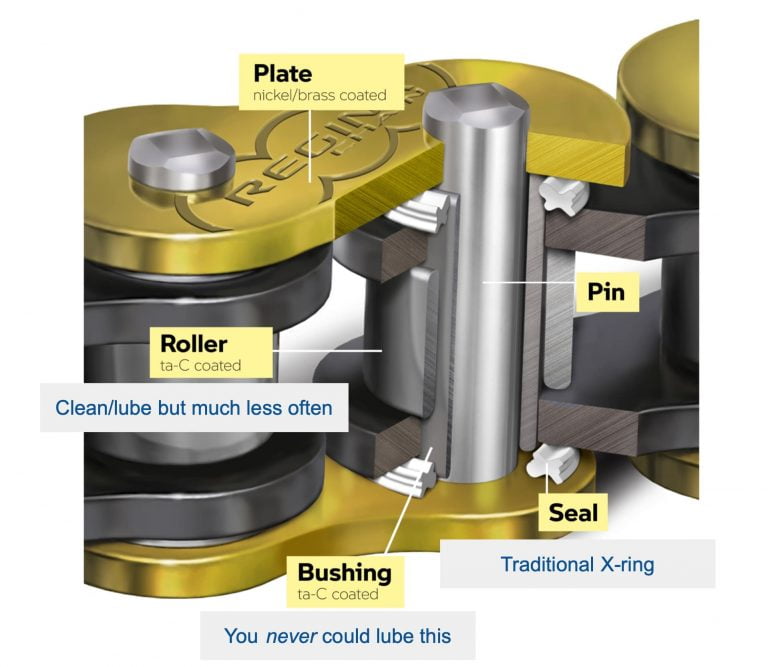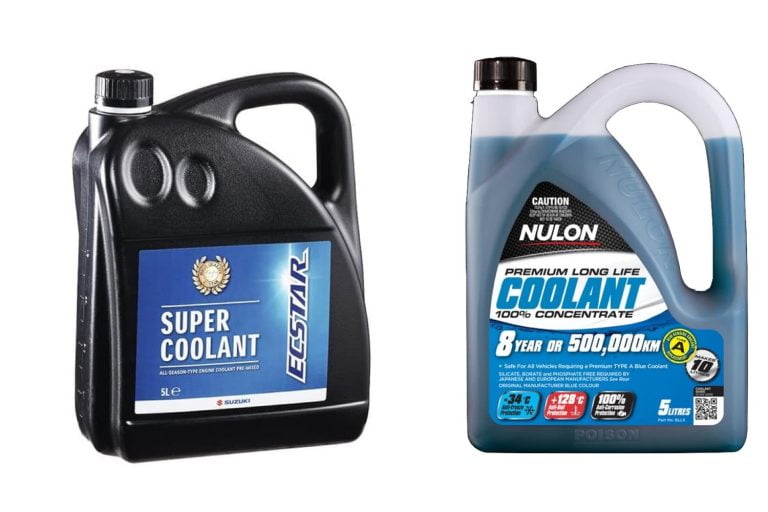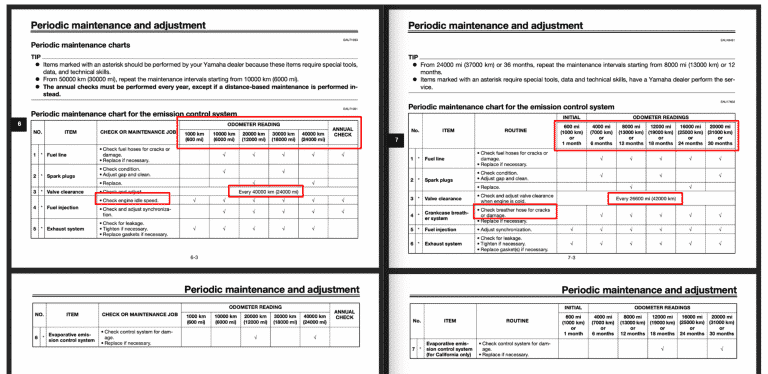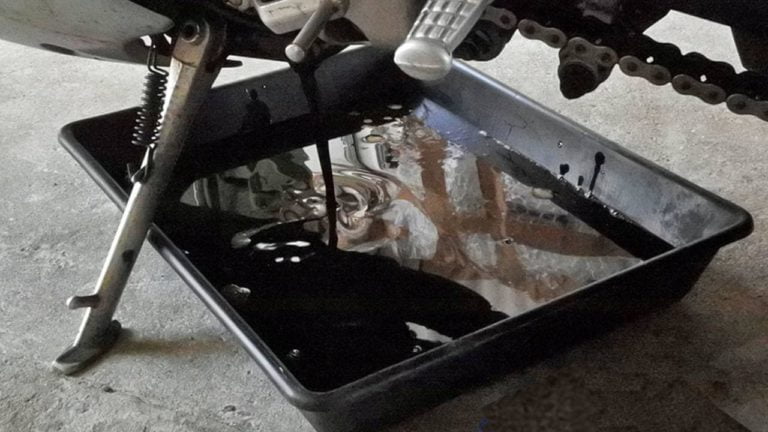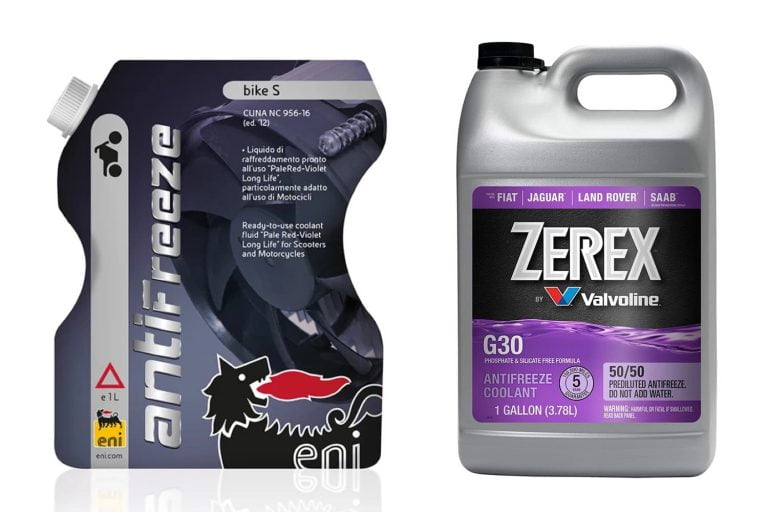The Lowest-Maintenance Motorcycles — A Discussion and Guide
In my time writing MaintenanceSchedule.com, I’ve read the manuals — focusing on the maintenance sections — of thousands of motorcycles.
I have also owned over a dozen motorcycles and ridden many more. In that time, and also writing for Motofomo.com, I’ve talked to countless motorcycle owners, store owners, rental fleet owners, writers, mechanics… you get the idea.
So I should, in theory, have a fairly established point of view of what a low-maintenance motorcycle is, and know what the very lowest-maintenance motorcycles are.
Guess what? It’s still not an easy answer, and highly subjective. How low-maintenance a motorcycle is depends on so many things other than the motorcycle, starting with the owner. Give someone with no interest in maintenance the most reliable donk on the planet and watch as they run it into the ground with glee.
But the reliability of a motorcycle also depends on how much attention the bits need, the quality of care, the environment in which a motorcycle exists, how it’s used, and sometimes, just luck.
Below I’ll examine questions like:
- What makes a motorcycle “low-maintenance”?
- What kind of motorcycle maintenance items are there, and how do they vary in difficulty?
- How does how often you maintain a bike affect its maintenance?
- Does brand matter? (I.e. is a Honda more reliable than a Harley?)
- Outliers and luck
Anyway. Enjoy!
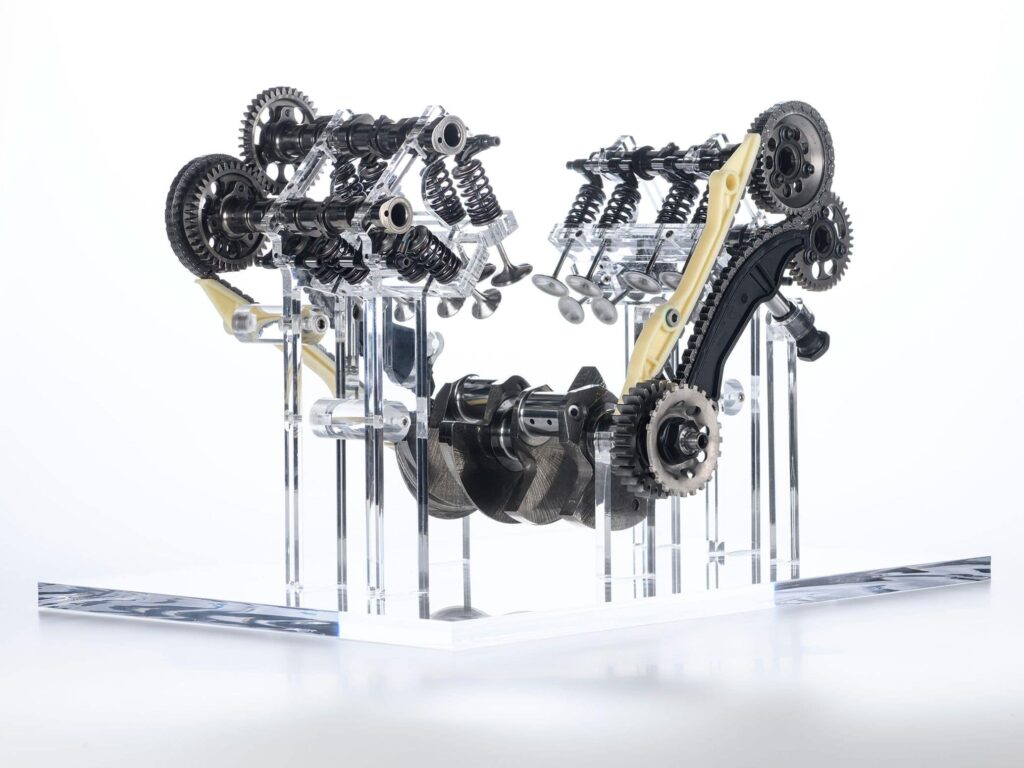
Defining “Low Maintenance” Motorcycles
Before we get started, let’s define what we mean by “low maintenance” motorcycles.
Generally speaking, a low maintenance motorcycle is a bike that requires minimal upkeep. This can mean that it has:
- Fewer parts that need regular service, or
- Parts designed to last longer between services.
However, it’s important to note that even low maintenance motorcycles still require regular maintenance to keep them running smoothly.
When it comes to low maintenance motorcycles, there are a few key features that you should look for. One of the most important is a simple design with fewer moving parts. This can help reduce the amount of maintenance required, as there are fewer things that can go wrong. Additionally, low maintenance motorcycles often have parts that are designed to last longer, such as chains and sprockets that are made from high-quality materials.
Another important factor to consider when looking for a low maintenance motorcycle is the type of engine it has.
In general, bikes with smaller engines tend to be easier to maintain, as they have fewer parts that need regular service. However, this doesn’t mean that you need to sacrifice power for low maintenance. There are plenty of bikes with larger engines that are still relatively low maintenance, thanks to their simple designs and high-quality parts.
One type of motorcycle that is often considered to be low maintenance is the cruiser. These bikes are designed for long, comfortable rides and often have simple, reliable engines that require minimal upkeep.
Additionally, cruisers tend to have fewer high-tech features than other types of bikes, which can help reduce the amount of maintenance required.
The key to finding a low maintenance motorcycle is to do your research. Look for bikes with simple designs, high-quality parts, and engines that are known for their reliability.
And remember, even the lowest-maintenance motorcycle still requires regular maintenance to keep it running smoothly.
The Most Common Motorcycle Maintenance Tasks
Before we talk about the most low-maintenance motorcycles, let’s take a look at some of the most common maintenance tasks that all motorcycles require:
- Oil and filter changes
- Drive chain or belt inspection / adjustments
- Tire repair and changes
- Brake / Clutch inspections
- Brake pad replacements
- Spark plug inspections
These are the items that you’re likely to do at a minor service.
Then a major service of a motorcycle can involve things like
- Valve clearance inspections and adjustment
- Spark plug change
- Shaft drive lubricant change
- Brake and (if relevant) Clutch fluid change
- Chain/Belt and sprockets change
- Fork fluid change
- Coolant change
It’s important to understand that all motorcycles will require these tasks (the relevant ones for your model) at some point. However, the frequency at which they need to be performed can vary greatly depending on the make and model of the bike.
The difficult of minor service tasks — changing the oil, checking the plugs — doesn’t vary too much between motorcycles. Some motorcycles have more difficult access, though. For example, if you have a fully-faired sport bike with four cylinders, then you have to remove the fairings and do inspections for four spark plugs. This is a lot more work than on a naked or offroad-style bike with no fairings and only one or two spark plugs.
So sometimes, the time or cost of a minor service can be much higher because you have to remove fairings. Removing fairings is a delicate task because you don’t want to bend, break, or scratch them. Mechanics do it with care.
Anyway, even if you’re comparing two similar bikes (say, two naked bikes with parallel twin engines), different manufacturers recommend very different service intervals depending on factors like
- Is the motorcycle air-cooled or liquid-cooled?
- What brand of motorcycle is it?
- How big is the engine?
For example, the Honda Grom, with its low-power 125 cc air-cooled motor, has 4000 mile / 6400 km oil change service intervals. But the Honda CB1000R has an 8000 mile / 12800 km oil change service interval for its high-power liquid-cooled four-cylinder engine.
Then the Yamaha MT-10, which also has a high-power liquid-cooled four-cylinder engine has a recommended 4000 mile / 6000 km service interval in the US, and 6000 mile / 10000 km service interval in the US.
Chain or belt adjustments are necessary to keep your motorcycle’s drivetrain running smoothly. It’s important to check the tension of your chain or belt regularly and adjust it as needed. A loose chain or belt can cause damage to your bike’s engine or transmission.
Tire changes are important for maintaining traction and safety on the road. It’s recommended that you replace your motorcycle’s tires every 5,000 to 7,000 miles, or when the tread wears down to 2mm. Be sure to also check the tire pressure regularly.
Brake pad replacements are necessary to ensure that your motorcycle can stop safely and effectively. It’s recommended that you replace your brake pads every 10,000 to 20,000 miles, depending on your riding style and the type of brake pads you use. Be sure to also check the brake fluid level regularly.
Battery replacements are necessary to ensure that your motorcycle starts reliably. It’s recommended that you replace your battery every 2 to 3 years, or when you notice that your motorcycle is having trouble starting. Be sure to also check the battery terminals for corrosion and clean them as needed.
By staying on top of these common maintenance tasks, you can help ensure that your motorcycle runs smoothly and safely for years to come.
The Varying Difficulty of Motorcycle Maintenance Tasks
When it comes to maintaining your motorcycle, it’s important to understand that not all tasks are created equal. Some are quick and easy, while others can be quite challenging. The difficulty of these tasks can vary greatly depending on the make and model of your motorcycle.
Maintaining a motorcycle can be a daunting task for many riders, especially those who are new to the sport. But with the right bike, maintenance can be a breeze. In this article, we’re going to discuss what makes a motorcycle low maintenance, and provide a guide to some of the most low-maintenance bikes on the market.
For instance, changing the oil on a motorcycle is a relatively simple task that can be done in just a few minutes. However, if you own a Harley-Davidson, you may need to remove the exhaust system to access the oil drain plug. This can add significant time and effort to the task.
Similarly, changing the air filter on a motorcycle is usually a straightforward process. However, if you own a sportbike with a ram-air intake system, you may need to remove the fairings and other components to access the air filter. This can turn a simple task into a time-consuming one.
Another factor that can impact the difficulty of motorcycle maintenance tasks is the age of the bike. Older motorcycles may have more complex systems and components that require more time and effort to maintain. For example, carburettor-fed motorcycles require more frequent cleaning and adjustment than newer fuel-injected models.
It’s also worth noting that the difficulty of these maintenance tasks can vary greatly as well. Some bikes require extensive disassembly to access certain parts, while others allow for easy access. For example, some motorcycles require removing the gas tank to change the battery, while others have a quick-access panel. And faired sport bikes require you to remove the fairing to do most things.
Finally, few things help with ease of maintenance more than familiarity, experience, and practise. The more you service your own bike, the easier it becomes. And the more you service bikes in general, the simpler all tasks start to seem.
What Makes a Motorcycle Low Maintenance
So, what makes a motorcycle low maintenance? Generally speaking, low maintenance bikes have fewer parts that need regular service, and those parts are designed to last longer.
For example, a bike with a shaft drive requires less maintenance than a bike with a chain drive because the shaft drive is enclosed and doesn’t need to be lubricated as often.
However, there are several other factors that can contribute to a motorcycle’s overall maintenance needs. Let’s take a closer look at some of these factors.
High-stress vs Low-Stress
One aspect that makes motorcycles high- or low-maintenance is how highly strung the engine is.
There are a few ways of considering describing an engine that’s “highly-strung”, but it’s usually a combination of high power output for its size, and a high compression ratio.
Sport motorcycles tend to have engines that are tuned to extract a lot of power out of their relatively small size.
Look for example at this range of motorcycles from Honda. These are all middleweight displacements (between 500-750 cc roughly), but they have a wide range of power outputs.
| Motorcycle | Peak Power (kW) | Displacement (l) | kW / litre | |
|---|---|---|---|---|
| Honda 599cc I-4 (CBR600RR) | 83 | 0.599 | 139 | 12.2:1 |
| Honda 649 I-4 (CB650R, CBR650R) | 70 | 0.649 | 108 | 11.6:1 |
| Honda 755 P-Twin (Hornet 750, XL750 Transalp) | 67.5 | 0.755 | 89 | 11.0:1 |
| Honda 745 P-twin (NC750X, X-ADV 750, Forza 750) | 43.1 | 0.745 | 58 | 10.7:1 |
| Honda 473 P-Twin (CB500, CBR500R, CB500X, Rebel 500, CL500) | 35 | 0.471 | 74 | 10.7:1 |
Just because an engine is tuned for high power doesn’t make it unreliable. But when something goes wrong, the chain reaction of consequences is more severe.
For example, if a low-tune engine runs low on oil or coolant, it will take longer to die than will a highly-tuned engine. Or similarly, if a sport bike’s engine has a weakness in the cylinder head gasket, all other things being equal, it’ll be more likely to develop a leak.
For this reason, engines that are tuned with low compression ratios and not to make much power out of a generally big engine are more reliable. That’s why manufacturers use low-power but big-displacement engines in scooters. Scooters are meant to be reliable, not exciting.
Air/Oil-Cooled vs Liquid-Cooled
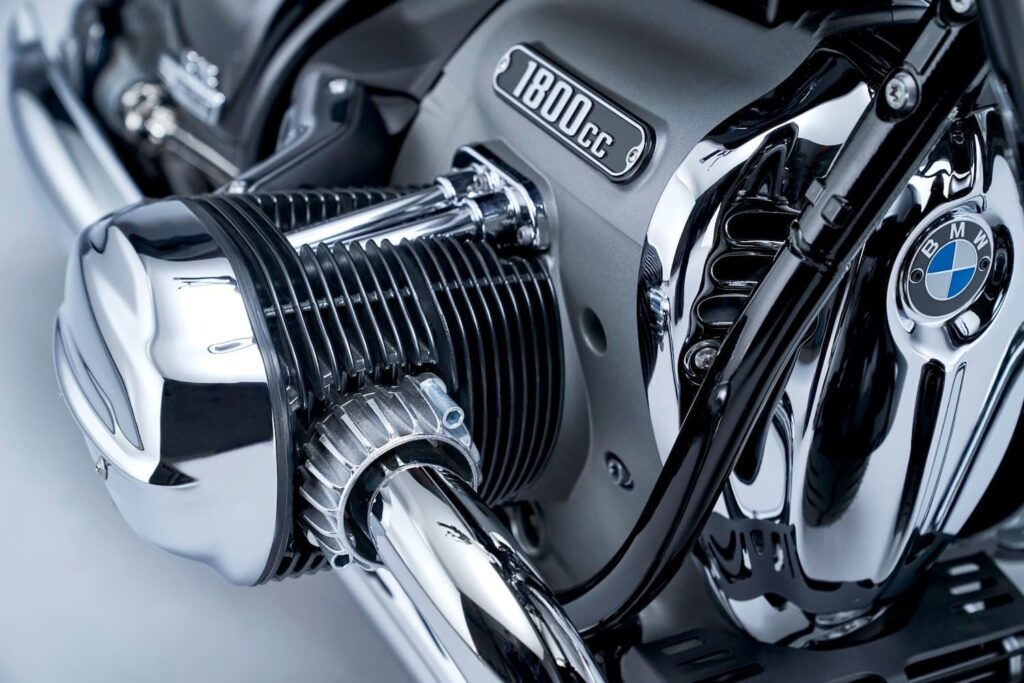
One of the most significant factors to considering the degree of maintenance a motorcycle may require is whether the bike is air/oil-cooled or liquid-cooled.
Air/oil-cooled motorcycles typically have fewer parts that need servicing, as they don’t have a radiator or coolant system. This can make them a great choice for riders who want a low maintenance bike.
Liquid-cooled motorcycles have more parts that need regular service. These bikes have a radiator and coolant system that needs to be flushed and refilled periodically. Additionally, the water pump, thermostat, and other components may need to be replaced over time, if they get corroded — which tends to happen if the wrong coolant is used, or if contaminants enter the system from degrading components.
On the other hand, liquid-cooled motorcycles can make motorcycles lower maintenance. When a motorcycle is liquid-cooled, its engine runs at a lower temperature. This means that there’s generally less stress on the engine. The result is that valve service intervals — one of the most complex items in regular vehicle maintenance — is greatly extended.
For example, when BMW changed their opposed boxer twin from air/oil-cooled to liquid cooled (around 2013 or 2014, e.g. the 2013 BMW R 1200 GS), they also doubled the recommended valve service interval.
Ducati, when they moved their motors from air/oil-cooled to liquid-cooled, extended valve service intervals from 7500 mile / 24000 km to double that for their superbike motors, and even longer for their street bikes (which generally have 18000 mile / 30000 km intervals), like that in the Ducati Monster 821 for example.
So it’s up to you to decide. Do you want to deal with having to think about replacing coolant and cooling lines, and maybe a water pump in the future? Or do you want to open up the valve cylinder heads more often and change the valve clearances? There are pros and cons to each.
Chain vs Belt vs Shaft
In addition to the cooling system, it’s also worth considering the type of drive system the bike uses.
There are three major kinds of final drive in motorcycles
- Chain drives — by far the most common, cheapest, and lightest
- Belt drives — Common in cruisers, also lightweight and inexpensive
- Shaft drives — Common in heavier, long-distance motorcycles, generally more expensive models
I don’t want to go into the “performance” rabbit hole. Many people claim that shaft drives and belt drives cost more energy than chain drives, but I’ve never seen any measured evidence of this. Anyway, I just want to talk about maintenance work.
Firstly, chain drives. Chain drives need a lot of maintenance. You need to regularly clean them, lubricate them, and check and adjust the slack. They generally have a shelf life of 20-40000 km (12-24000 miles), depending on how you use them and what kind of conditions you expose them to.
On the other hand, it’s very easy to maintain chains on the fly. If your chain does break in the middle of nowhere, it’s possible to (worst case scenario) repair it with a repair link or even a bit of wire and limp home. You can buy chains anywhere (though they may not be very good ones).
One other advantage of chains is that you can quite easily change the final drive ratio to suit your style of riding. If you’re going to do a lot of highway riding, it makes sense to change the sprocket ratio so that you’ll be at lower RPMs on the highway, to use less fuel. But if you’ll be in the dirt a lot, you might want higher gearing for easier control at low speeds.
Belt drives are common on cruisers (by all brands, though some Japanese- and German-made cruisers use shaft final drives), a few sport bikes with cruiser origins (like those by Buell), plus a few other random examples like some bikes by BMW (e.g. the BMW F 800 GT).
Belt drives need less maintenance than chains in that you don’t have to constantly clean and lubricate them. But you do have to check and adjust the tension periodically.
One disadvantage of belt drives is that they’re much less happy about things like rocks. Debris can get trapped into a belt drive, which can damage teeth and the belt more easily. You’ll notice that there are off-road shaft bikes and chain bikes, but no stock belt-drive off-road bikes (other than the short-lived Yamaha SCR950, if you want to call it an off-road bike).
Finally, shaft drives.
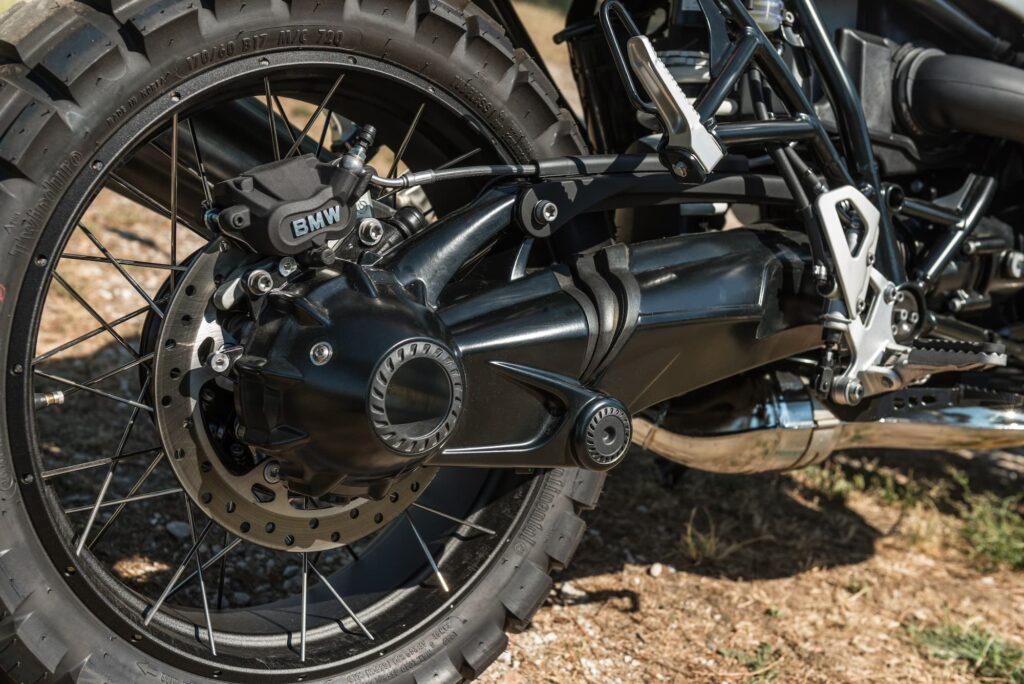
Shaft drives are wonderfully low maintenance. You check the fluid level periodically, and change the fluid every now and then.
But there are some maintenance disadvantages with shaft drives that come about because the whole drive comes out the rear of the motorcycle. Which means if you have a problem with the clutch — whether it’s slipping, or whether there’s some oil leak (as I once had on the rear main seal of a BMW I had) — you have to literally split the motorcycle in two. It’s a huge job that costs you either around 8 hours of shop time or a couple of days of your own labor.
On chain / belt drive bikes, the layout means you have easier access to the clutch.
Secondly, it’s very rare for a shaft drive to completely give up the ghost, but that’s the other downside: It does happen.
When a shaft drive fails, it does so usually completely, and costs thousands to fix even if you’re in a place where you can get the parts and the work done. If you’re in the middle of nowhere… you’ll have to get it towed out, or you might be shopping for a new motorcycle.
That said, a shaft drive failure is rare. So it’s up to you.
Valve Service Intervals
One of the scary parts of motorcycle maintenance is the valve service. But the “scariness” of this service varies dramatically between motorcycle, depending on a few factors:
- How many cylinders there are
- How much stuff there is in the way
- Service interval: How often you have to do it (whether at all — some motorcycles have no valve service interval)
- Valve design: How difficult the job is (depending on the cylinder head design)
The first two factors are fairly intuitive. If you have a four-cylinder sportbike with fairings, there’s going to be more work than a naked bike with a single or two-cylinder engine.
The third and fourth factors are worth discussing further.
Valve service interval: The recommended valve service interval varies dramatically by type of motorcycle.
Generally there are four categories:
- Rally or enduro-style motorcycles: Very short, e.g. 1-2000 miles / 2-3000 km. E.g. the Honda CRF450R, KTM EXC 500. Or small / mini motorcycles like the Grom.
- Older air-cooled or air/oil-cooled motorcycles: Every ~3-6000 miles (5-10000 km). E.g. Early Ducatis, BMWs, etc, and some modern air/oil-cooled bikes too, also by Ducati and BMW.
- Modern liquid-cooled motorcycles: Usually between 16-25000 miles (24000 – 40000 km).
- Harleys / Indians (with a few exceptions in each), and a few other cruisers with self-adjusting hydraulic lifters: No specified intervals, unless the valves play up.
There are some other bikes with very long valve service intervals, like the Ducati Multistrada V4 or the Ducati Diavel V4. The “Granturismo V4” motor has a valve service interval of a whopping 60 000 km — longer than most people own motorcycles.
And you do still have to attend to the valves when it is otherwise necessary, e.g. when there’s valve noise at certain RPMs.
Valve service complexity: This also varies dramatically by motorcycle. This is more of a range.
The easiest kind of valve to adjust is an older style bike with screw-and-locknut adjusters.
On these motorcycles, you loosen a locknut and use a screw or bolt at the top to turn the adjuster. You get it to when it grips on the feeler gauge, then you tighten the locknut. Easy!
Since you don’t even have to drop the oil, the whole operation can be done in 15 minutes, start to end… after you’ve done it a couple of times anyway (it can be fiddly).
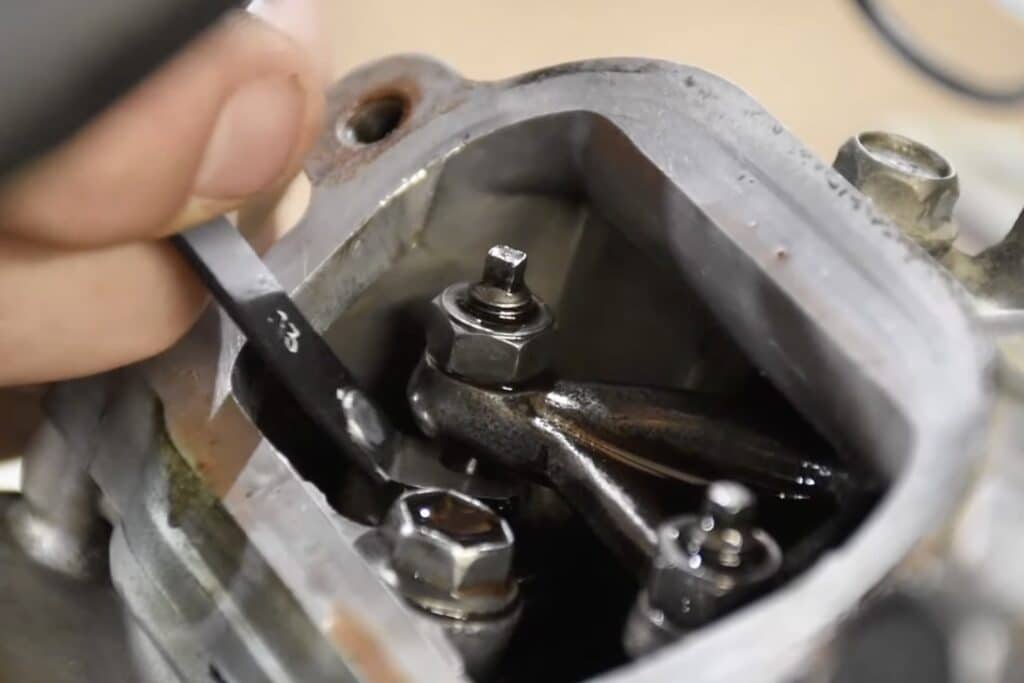
Most modern motorcycles since about the mid-2000s (and some from earlier) use shims, either shim-over-bucket or, predominantly these days, shim-under-bucket. But anyway, what shim-style valve systems have in common is that you have to swap out shims.
On motorcycles with shim-style valves, if a valve clearance is out of spec, you have to place shims of varying thickness inside a recipient. For example, if the clearance is too large, you replace the shim in there with a thicker one, to tighten it up.
Doing a shim-style valve job is usually more complex, because you often have to move bits out of the way, and have spare shims on hand, and do a bit of math to get the clearance right.
There are varying other complicating factors in how difficult a valve job is, including:
- Is access difficult? You might not have a lot of room to do the work. It’s easier on some chassis designs where you can see the whole engine, but harder when there’s a beam in the way.
- Do you have to remove the cam chain to remove the cams? In many dual overhead cam engines with chain-driven cams, you have to remove the cam chain tensioner and the cam chain to remove the cams and get access to the valves. Doing this isn’t hard, but then you have to make sure the timing is correct and put it back together again correctly… or you’ll be in trouble. It takes a lot of care, and people get it wrong. (It’s one advantage of other designs like gear-driven cams, hybrid gear/chain-driven cams, or Honda’s Unicam design.)
- Is the motorcycle a Ducati with desmodromic valve actuation? If that’s the case, you have twice as many clearances to address, and if one is out of spec, then the other is.
Generally speaking, I think any home mechanic who isn’t a total dolt and has a set of tools can do a screw-and-locknut type valve adjustment.
But if you have to remove cams and do a shim-style valve adjustment… well, personally, I’d recommend an expert show you how the first time. And at very least, make sure you have a copy of a good service manual for your bike.
Theory vs. Reality in Motorcycle Maintenance
Finally, it’s worth noting that even apparently low-maintenance bikes can end up needing a lot of work — or vice versa.
For example, some cruiser motorcycles may have no specified valve service interval, but you may observe valve noise and have to get in there anyway. You won’t necessarily have to, but you shouldn’t assume that you’ll never have to open the valve covers.
On the other hand, valves tend to “bed in” on most motorcycles. Owners of modern liquid-cooled motorcycles with long valve service intervals typically say that they had to adjust a few clearances at the first valve inspection, but then never had to again in the lifetime of the vehicle.
There’s often a trade-off between different kinds of valve designs. E.g. on the one hand, screw-and-locknut type valve adjusters are easier to manipulate. But on the other, they’re frequently on motorcycles that have lower maintenance intervals.
Similarly, air/oil-cooled motorcycles don’t need the liquid cooling system serviced. But you’re likely to have to service the valves more often, as they’re under more heat stress (e.g. the valve service interval became twice as long when Ducati and BMW transitioned from air/oil-cooled to liquid-cooled engines for their street bikes in the 2010s). Pick your poison!
Personally, I think the best way to determine whether a motorcycle is low maintenance is to do your research and talk to other riders who own similar bikes — especially a previous owner, where there is one.
Mechanics can give you good insight too. For example, some mechanics have told me that while certain motorcycles have specified valve service intervals, in reality, they don’t do them unless they hear valve noise, which occurs very infrequently.
Understanding Maintenance Schedules
The first place to consult when looking for a low-maintenance motorcycle is the maintenance schedule.
Modern motorcycles (well, most of them) tell you when they need maintenance. They have counters that come up on the display saying how many miles or km (or days / months) it is to the next service. This is usually just a factor of time or distance, but some motorcycles intelligently adapt the schedule to the riding style.
But before you buy a motorcycle, you can check the maintenance schedule. How? Google it! You can see it right here on this site. Or look in the manual yourself.
A maintenance schedule typically will show how often you have to do service and what items you have to do at every service.
Besides the various factors that make a bike high or low maintenance (air/liquid cooling, chain/shaft drive etc), the things I would look for are
- How often do you have to change the oil / filter?
- How often do you have to check the valve clearances?
- Are there any other unusual items that are required periodically? (Like changing fork oil, alternator belt, or shaft drive oil)
For example, the maintenance schedule for a Ducati Monster 1100 specifies that you have to change the oil every 7500 miles / 12500 km. That’s fine! But you also have to change the timing belts every two years. That’s a bit annoying (it’s fiddly). And unfortunately, you have to check the valve clearances at every oil change. Boo! This has a desmo engine. So that’s bad.
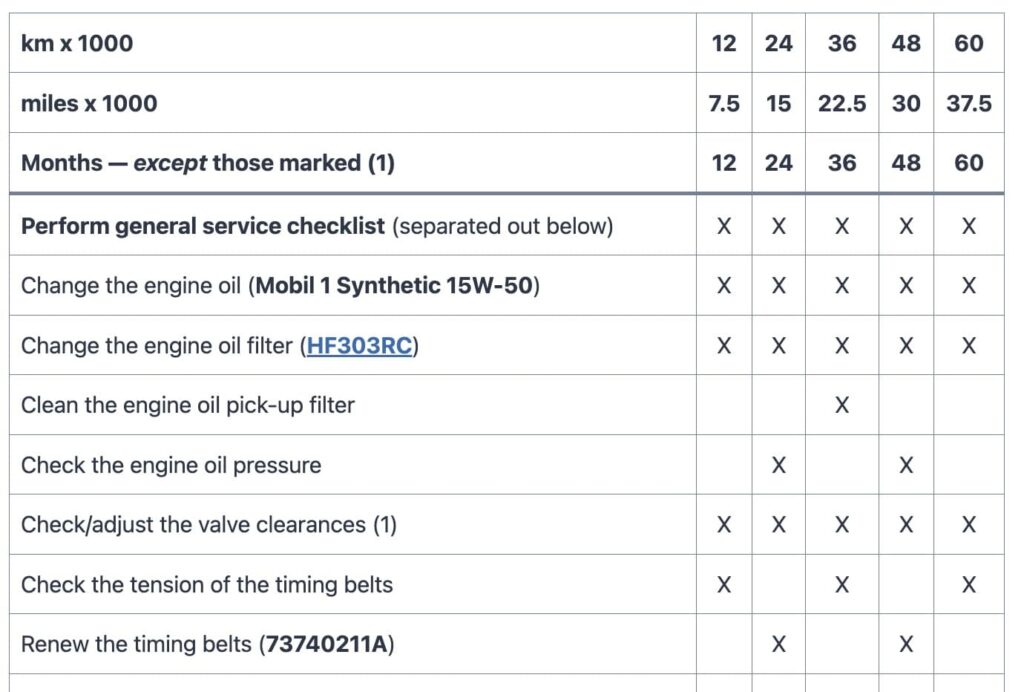
There’s more detail in the maintenance schedule above. But they’re organised so the most important things are at the top.
Look through them for any surprises. Do you have to change other consumables, other than the oil? That’s not a bad thing, but it might be a new skill to learn. That’s how I learned how to change an alternator belt on a BMW, for example. You might have to clean filters or change other bits.
But generally, most of the answers can be had in the service in the questionsve. abo
The Lowest-Maintenance Motorcycles — A Buyer’s Guide
With all the above said, it’s important to note that some motorcycles really do have a reputation for being low-maintenance.
I’m hesitant to put names down here because I’ll definitely exclude some that are worthy of mentioning, and include some that someone will have had a problem with.
To me, the lowest maintenance motorcycle would be one with
- No valve adjustment intervals ever (self-adjusting hydraulic lifters)
- A chain final drive
- Air cooling or air/oil cooling
What is there out there, other than the Honda CB750 Nighthawk?
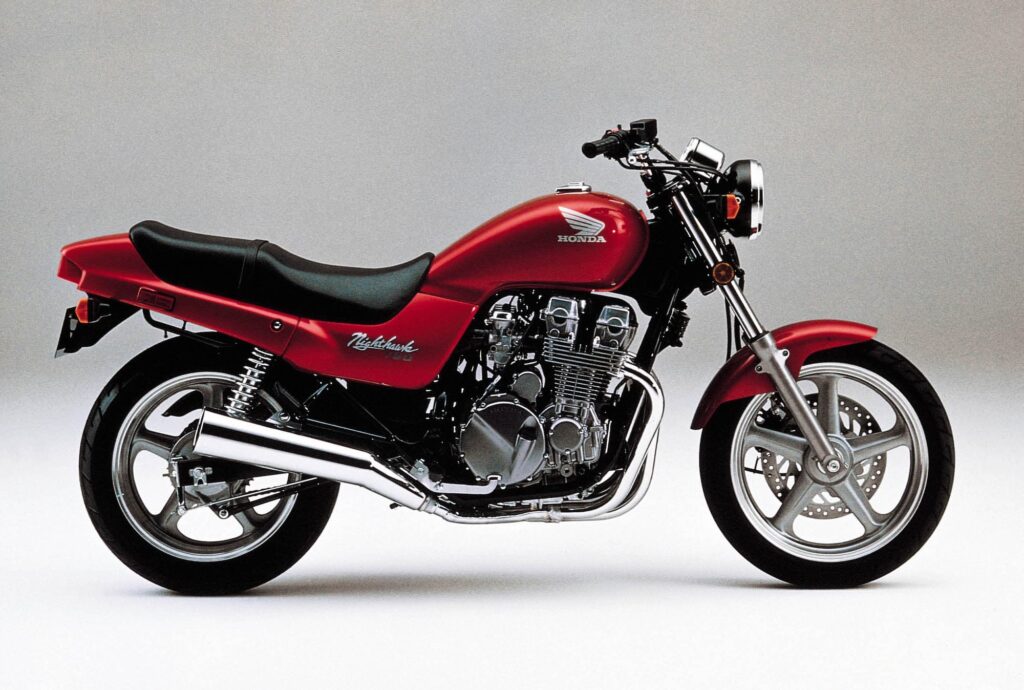
Handsome thing, isn’t it? Unfortunately, they’re really hard to get. I have half a mind to import one from the UK or the US. Now that I’ve written these, everyone else is going to go get them first. My fault.
But your definition of “low-maintenance” might be different.
For example, if you just want an engine that’ll never die (as long as you keep it oiled), then you basically should be looking at any modern liquid-cooled small or middleweight engine.
Engines in any Japanese fuel-injected middleweight motorcycle — including the Honda parallel twins and fours, the Suzuki V-twins and fours (and their new parallel twin, I’m assuming), the Kawasaki parallel twins and fours, and Yamaha’s parallel twins, triples, and older fours, will just go forever unless you mistreat them.
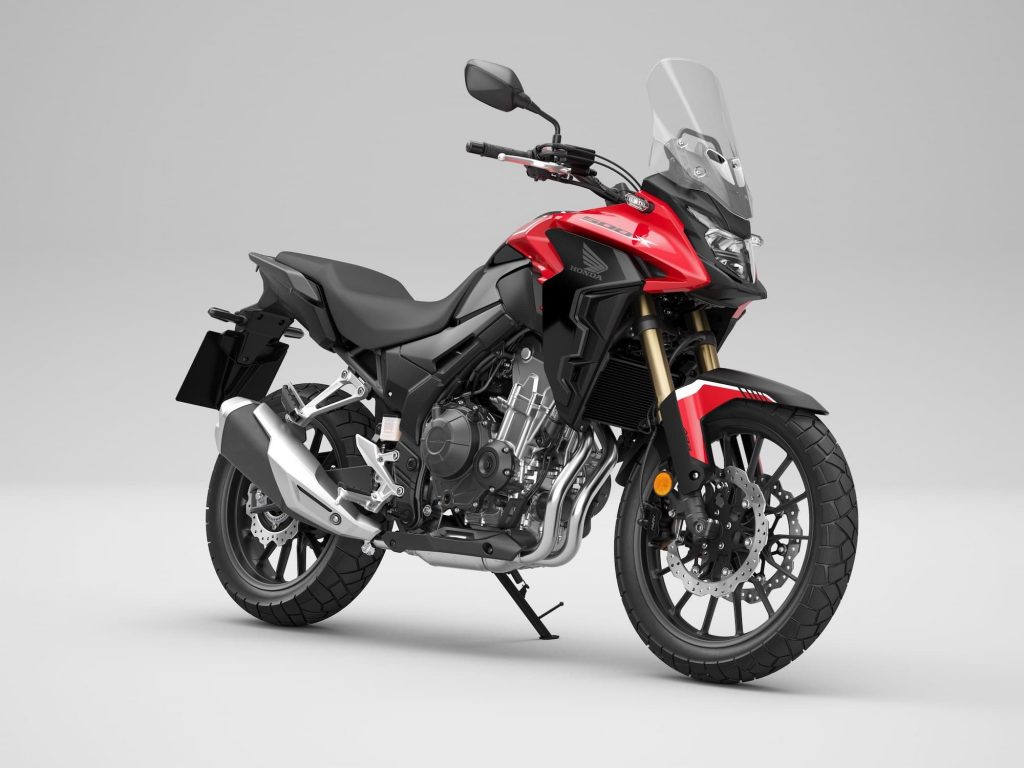
Another way of looking at “low-maintenance” is one with no fixed valve service intervals and a low-maintenance drivetrain.
If this is you, then you’re probably looking at a cruiser from the likes of Harley-Davidson or Indian!
Motorcycles based on the Harley-Davidson or Indian air/oil-cooled motors have no specified valve service intervals. And they all have belt final drives, which need much less love than chains do.
The Sportster 883, for example, is built from the same engine block as the Sportster 1200, but sleeved for lower displacement. That would make the engine even less susceptible to failure.
Plus, they look really cool.
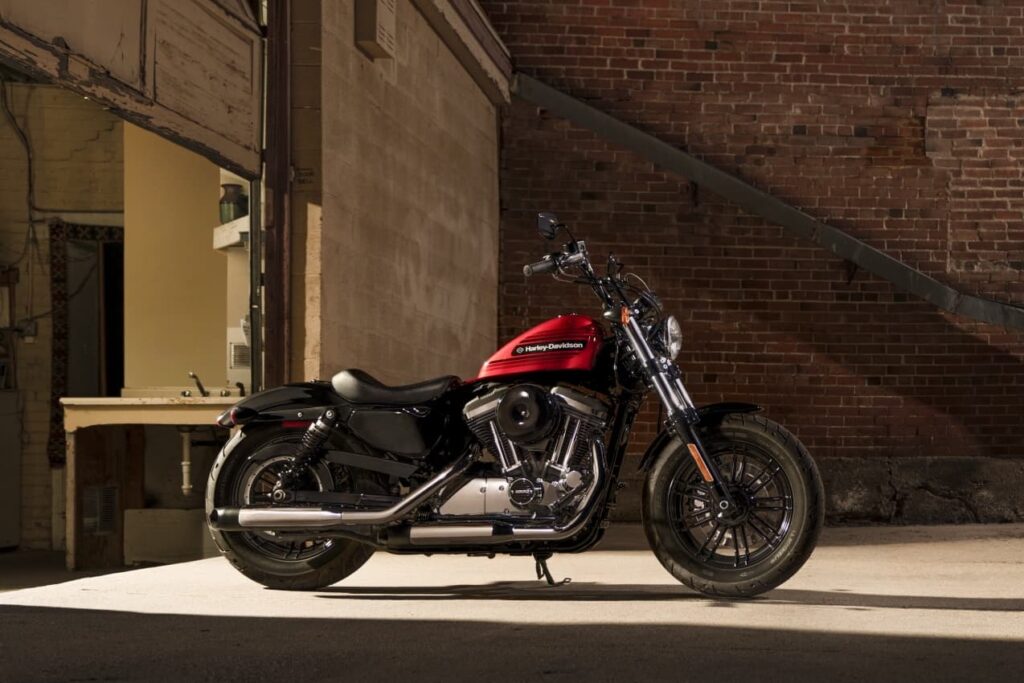
On all these bikes, the oil change service interval is 5 000 miles / 8 000 km (unless you do a lot of low-speed short-distance riding, especially in cold weather).
There are many conflicting accounts of reliability of Harley-Davidson motorcycles in particular. Aficionados of the brand say they’re as reliable as any other, and that stories about unreliability are from people who haven’t maintained the bikes, or who have made a lot of unusual performance modifications.
However, there’s very little data, just a lot of personal opinion on the matter, and it gets quite heated. All bike brands have had recalls and failures (Harley conducted an early recall of the M8 motor for oil sumping, BMW recalled a recent gen S 1000 RR brakes for slight leaking, Honda recalled the recent CBR1000RR-R Fireblade for a software fault), and all have many owners who’ve had tens of thousands of trouble-free miles.
I won’t throw my opinion into the mix other than to say that you should carefully consider the previous ownership and service history of any motorcycle before making a decision.
Wrap-up
A “low-maintenance” motorcycle is the dream of many motorcycle owners — at least for their everyday beaters. An oil change is fun the first time, but it gets old very fast! And the same could be said for the more tedious tasks like valve service.
But owning a motorcycle doesn’t have to be daunting. Figure out what level of maintenance you’re comfortable with and what sacrifices you’re willing to make, and find a motorcycle that fits your needs. Some people are perfectly happy to be in the garage tinkering, but many others would prefer to be out there riding rather than wrenching.
The best news is that the lowest-maintenance motorcycles don’t have to be boring. Just do your research, check the maintenance schedules, and you might have many fun, low-maintenance miles ahead of you.
